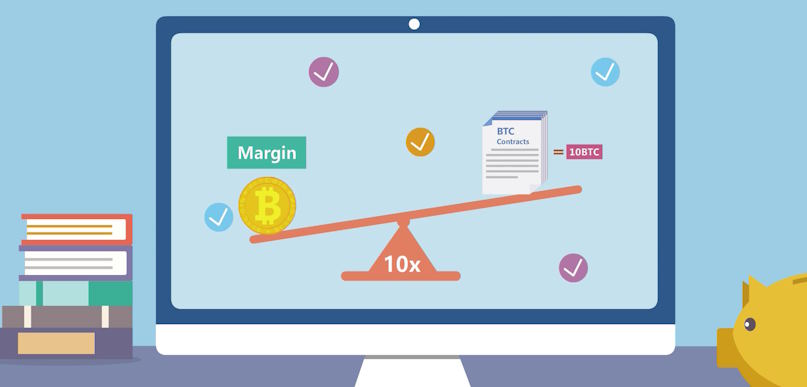
Leverage and Margin Trading: Amplifying Profits (and Risks) on New Coin Exchanges
— March 12, 2023Leverage and margin trading have emerged as formidable tools, offering traders the potential to magnify gains and navigate the tumultuous crypto market with strategic finesse. As new coin exchanges proliferate, these platforms provide unprecedented access to margin trading, enabling traders to borrow capital and enter positions larger than their initial investment. However, this powerful mechanism comes with a double-edged sword, as the risks involved can be equally substantial.
The Pros and Cons of Leverage and Margin Trading
Leverage and margin trading offer traders exciting opportunities to maximize their gains, but they come with their fair share of risks. Let’s dive into the advantages and disadvantages of this high-stakes trading strategy.
Pros of Leverage Trading:
- Amplified Profit Potential: Leverage allows traders to control positions larger than their capital, potentially magnifying profits. Even a small price movement can lead to substantial gains, making it appealing for those seeking short-term rewards.
- Diversification of Trading Strategies: With leverage, traders can diversify their portfolio and explore various trading strategies simultaneously. This flexibility enables them to capitalize on different market conditions and potentially mitigate risks.
- Access to Larger Positions with Less Capital: Leverage empowers traders with limited capital to enter positions they wouldn’t otherwise afford. This democratization of trading opens doors for individuals who want exposure to higher-priced assets.
Cons of Leverage Trading:
- Increased Risk of Losses: While amplified profits are possible, so are amplified losses. Even small price fluctuations can lead to significant negative outcomes, potentially wiping out the entire invested capital.
- Margin Calls and Liquidation: If a trade moves against the trader, the exchange may issue a margin call, requiring additional funds to maintain the position. Failure to meet this call could lead to forced liquidation, resulting in substantial losses.
- Psychological Stress and Emotional Decision-Making: The pressure of managing leveraged positions can cause heightened stress and emotional decision-making. Traders might make impulsive choices, deviating from their strategies and jeopardizing their investments.
Risks and Challenges in Margin Trading
Margin trading in the cryptocurrency market offers tantalizing possibilities, but it’s crucial to acknowledge the significant risks and challenges that accompany this venture.
Volatile Nature of Cryptocurrencies:
Cryptocurrencies are renowned for their extreme price volatility. While volatility can lead to rapid gains, it can also result in substantial losses. Margin traders are particularly susceptible to these fluctuations, as leveraged positions amplify both profits and losses.
Lack of Regulatory Oversight:
Unlike traditional financial markets, the cryptocurrency landscape often lacks robust regulatory oversight. This regulatory ambiguity exposes traders to potential fraud, market manipulation, and unreliable practices by some exchanges.
Counterparty Risks on Exchanges:
Margin trading relies on borrowing funds from an exchange. However, if the exchange faces insolvency, traders could lose their borrowed capital and their assets. Traders must be cautious about the credibility and security measures of the chosen exchange.
Technical Glitches and Downtime:
Cryptocurrency exchanges occasionally experience technical glitches, outages, or other technical issues. These disruptions can prevent traders from executing timely trades or managing positions effectively, leading to unexpected losses.
Overtrading and Addiction to High-Risk Strategies:
The allure of quick profits can drive traders into a cycle of overtrading and relying on overly aggressive strategies. This addiction to high-risk approaches can be financially devastating and emotionally draining.
Strategies for Successful Margin Trading
Margin trading presents a high-octane opportunity in the cryptocurrency realm, but it demands meticulous planning and strategic execution. Let’s explore key strategies that can help traders navigate this challenging terrain.
Risk Management and Setting Stop-Loss Orders:
Effective risk management is the bedrock of successful margin trading. Traders must define their risk tolerance and set stop-loss orders to limit potential losses. These automatic triggers can prevent emotions from guiding impulsive decisions during market fluctuations.
Choosing the Right Leverage Ratio:
Selecting an appropriate leverage ratio is pivotal. While higher leverage can amplify gains, it also heightens the risk of losses. Traders should opt for a ratio that aligns with their risk tolerance, experience, and market conditions.
Conducting Thorough Research and Analysis:
In-depth research is a non-negotiable aspect of margin trading. Traders should analyze market trends, news, and technical indicators to make informed decisions. Staying well-informed can help anticipate potential price movements and reduce the element of chance.
Diversification and Not Putting All Funds into One Trade:
Diversification is a shield against excessive risk exposure. Allocating funds across multiple trades and assets can help mitigate losses if a single trade goes awry. Prudent traders refrain from concentrating all their capital into a single trade.
Developing a Trading Plan and Sticking to It:
A well-defined trading plan sets the roadmap for success. It outlines entry and exit points, risk-reward ratios, and strategies for various scenarios. Sticking to the plan, even in the face of emotional impulses, fosters disciplined and consistent trading.








